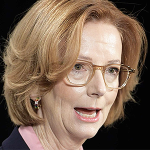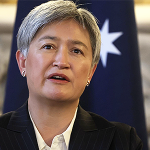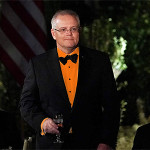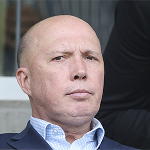Catch up Albo.
The Dan Andrews government beat you to your latest punch line six years ago.
It was in October 2018 that the Victorian government signed the state’s third Recognition and Settlement Agreement (RSA), this one with the Taungurung Land and Waters Council Aboriginal Corporation (TLaWC), and the Taungurung Traditional Owner group.
In that agreement, there was a section devoted to ‘Economic development opportunities’.
Section 9.1 is headed ‘Renewable energy’.
There it is, Prime Minister, signed and sealed six years ago: Victoria, the vanguard of Indigenous politics, ‘truth telling’, and likely ‘Treaty’, left you and the nation in its wake.
To Victorians, Garma is so yesterday.
Even more old-fashioned was the Prime Minister’s willingness to tell the nation about his ‘renewables for reconciliation’ plan. In Victoria, silence is king and stealth is the system: the government signs these deals in secret and it tells the public only once they’re official. Deal first, disclosure second.
Most Victorians still don’t know the RSAs exist, despite 30 regional councils falling within their boundaries and requiring their attention.
Even fewer Victorians know about the statewide Aboriginal and Local Government Strategy 2021-26 which impacts every council in the most radical and undemocratic of ways. But that’s another story.
The Taungurung renewable energy deal has already begun. It was not the massive solar and wind farm that might have been expected, but they may come.
The Taungurung’s first energy project was a modest 50 solar-panel instalment.
The critical point, however, is where they are located: they are installed at the Broadford office of the Department of Environment, Land, Water and Planning (DELWP). They are managed via a ‘community-owned renewable energy’ model by Indigo Power and reportedly supply the building 30 per cent of its electricity needs. The community energy group will hand over the ownership of the panels in 10 years, when the panels’ efficiency has largely ended.
So, in short, the system is this: the Victorian government funds the Indigenous Agreement, the Agreement includes a renewable energy project, the project gets placed on government (taxpayer) land, and the government (taxpayers) buy the power. It’s the Circular Economy 101.
And so it is that the Victorian public is now buying ‘Indigenous energy’. The Gap must now surely be closed.
The project fits the Labor government’s social inclusion policy perfectly.
The ABC wrote about the signing of the Taungurung deal in July 2019, and quoted the Taungurung Land and Water Council’s CEO. He said that the project had ‘been a very big red-tape-cutting exercise’ and they were aspirational about investing in ‘environmentally appropriate’ projects. Better still, they were very keen to invest ‘in the department’s property assets’.
But one can only ask, what company wouldn’t be keen to have this setup?
Non-Indigenous Victorian companies wanting to self-determine their futures would be within their rights to request the ‘very big red-tape-cutting’ afforded the Taungurung. Given the growing howls about more red and green tape, one assumes this has not happened.
The ABC story then quoted the Project Manager: ‘Taungurung are the traditional owners of that country and the sun has always shone on their country.’
The sun also shines in other places like Argentina, Alaska, Antarctica, or on the African Savannah. It even shines on Putin’s holiday homes. It shines in Moscow and on the great Mississippi River. The sun has shone on lots on places, on lots of countries, and it belongs to no one.
The story also talks about not damaging ‘country’.
But ‘damaging country’ is exactly what is happening with the rollout of wind and solar farms across Australia. Swathes of trees are being cut down and replaced with concrete, steel and glass – all to save the world.
The solar panels and turbines have a limited lifespan. Most come from China, a nation accused of dubious worker conditions. The transmission lines required to connect the solar and wind farms are already crisscrossing valuable countryside and will increasingly do so. The outcomes are neither farmer nor environment friendly.
Further, the Taungurung deal allows the Indigenous group to put an energy project anywhere in Victoria.
Try that in New South Wales.
It seems such a strange way to go about things in a state that claims to be holier than thou.
On 7 August, just days after Garma, the Victorian Minister for Equality put out a media release about ‘protecting the rights, identities, and dignity of LGBTIQA+ people’. The final sentence in the release said this: ‘Because in Victoria, equality is not negotiable.’
Phew. What a relief.
Under that proviso, every Victorian should be able to mount a case for an agreement with the state for funding and options not available to others.
It’s the kind of deal the Prime Minister was spruiking in Garma: separatism and (silly) solutions for some above all others.
But even in Victoria, renewable energy isn’t the solution for Indigenous prosperity.
One only has to look at the hugely successful Indigenous people in Australia who have already shown how to achieve that via education and a job – working hard at both – and aspiring always to be their best.








